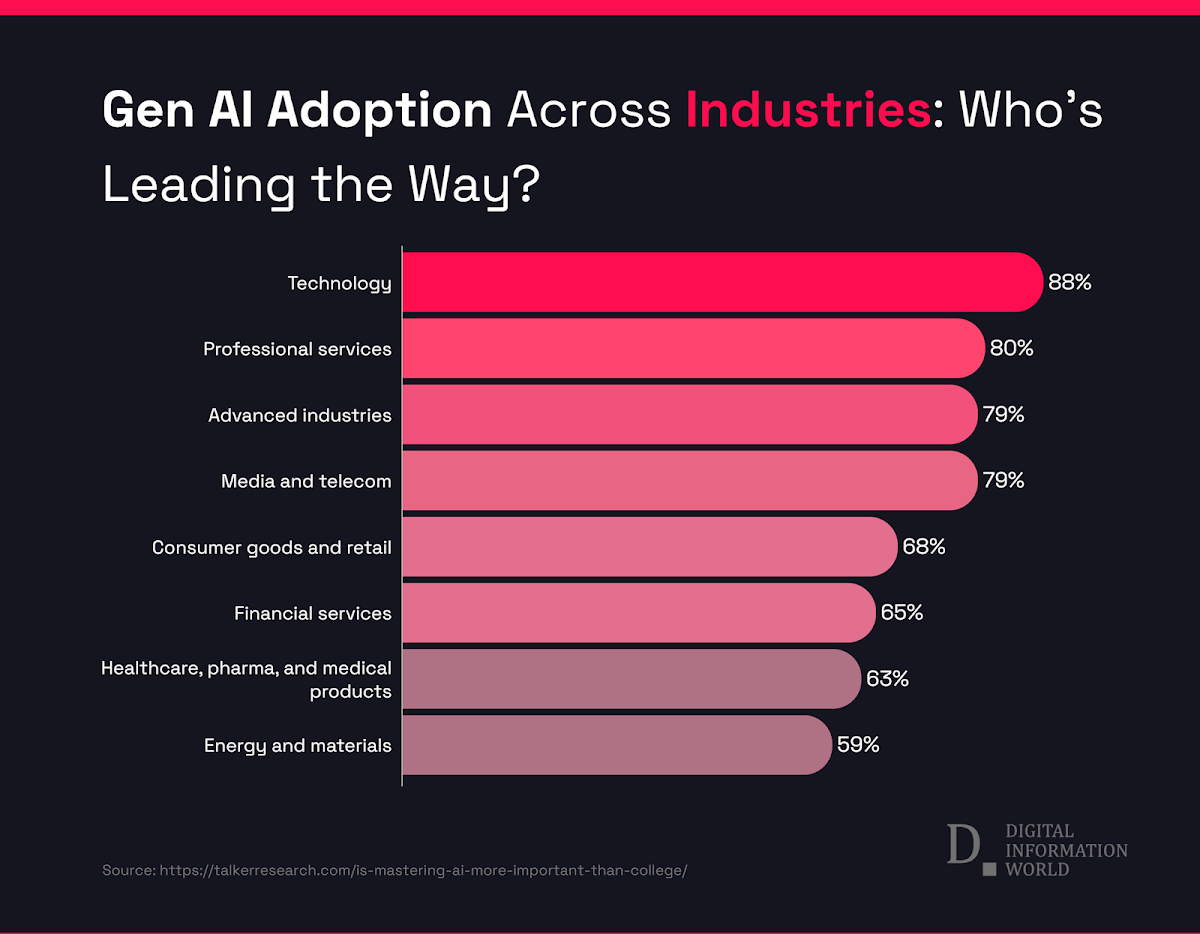More employees across different sectors are using generative AI tools to complete tasks. This shift has moved quickly over the past year. Based on new data from McKinsey most industries now report some level of adoption among their workers, though the pace varies by field.
Technology and Consulting Are Ahead
The technology sector reports the highest share of generative AI use. About 88% of respondents say they use it in at least one part of their job. This includes functions like marketing, sales, and customer-facing content creation. It’s common for teams to rely on AI tools to help write, analyze, or organize materials across digital platforms.
Professional services firms are not far behind. About 80% of employees in consulting, legal, and accounting firms use AI tools in some way. Many of these tasks involve research, document processing, and data review.
Advanced Manufacturing and Media Use Varies
In areas like aerospace, electronics, and semiconductor firms, usage is also high. Around 79% of workers in these fields have used generative AI. Marketing leads the list of functions, but regulatory tasks remain less common for automation.
Media and telecom workers show similar adoption levels. These companies often experiment with video, audio, and written content powered by AI systems. While not universal, creative departments tend to use these tools more than technical or legal teams.
Retail, Finance, and Health Are Catching Up
Consumer-facing companies, like those in retail or packaged goods, show lower but still strong engagement. Around 68% of workers say they’ve used AI in one or more functions. In finance, the figure is close to 65%. Banks and insurers often apply AI in customer support or internal data handling.
Healthcare, pharmaceutical, and medical product companies also report adoption at about 63%. In these areas, the use is often tied to administrative tasks, reporting, or patient communication tools.
Some Sectors Are Slower
Energy and materials companies sit at the lower end of the list. About 59% of their workers say they’ve used generative AI in any part of their role. This includes tasks like operations support or planning, but manual or field work tends to limit usage.
Across all industries, some functions remain mostly untouched by generative tools. In particular, workers in manufacturing and supply chain roles report the lowest usage. Only 5% of employees in manufacturing, and 7% in supply chains, said they use AI in their regular tasks. This may reflect the slower integration of automation in hands-on or logistics-heavy environments.
A Snapshot of Change, But Still Uneven
Overall, the data shows that generative AI is already present in most workplaces, but it’s not evenly spread. Some industries are far ahead, using these tools across multiple teams. Others are still exploring what role it can play.
As more companies test new systems, and as tools evolve to handle more types of tasks, the current gaps may shift. For now, though, the areas seeing the most direct use are those where digital workflows, content, or analysis already play a central role.

Notes: This post was edited/created using GenAI tools. Image: DIW
Read next: Students Turn to AI While Colleges Struggle to Keep Up
